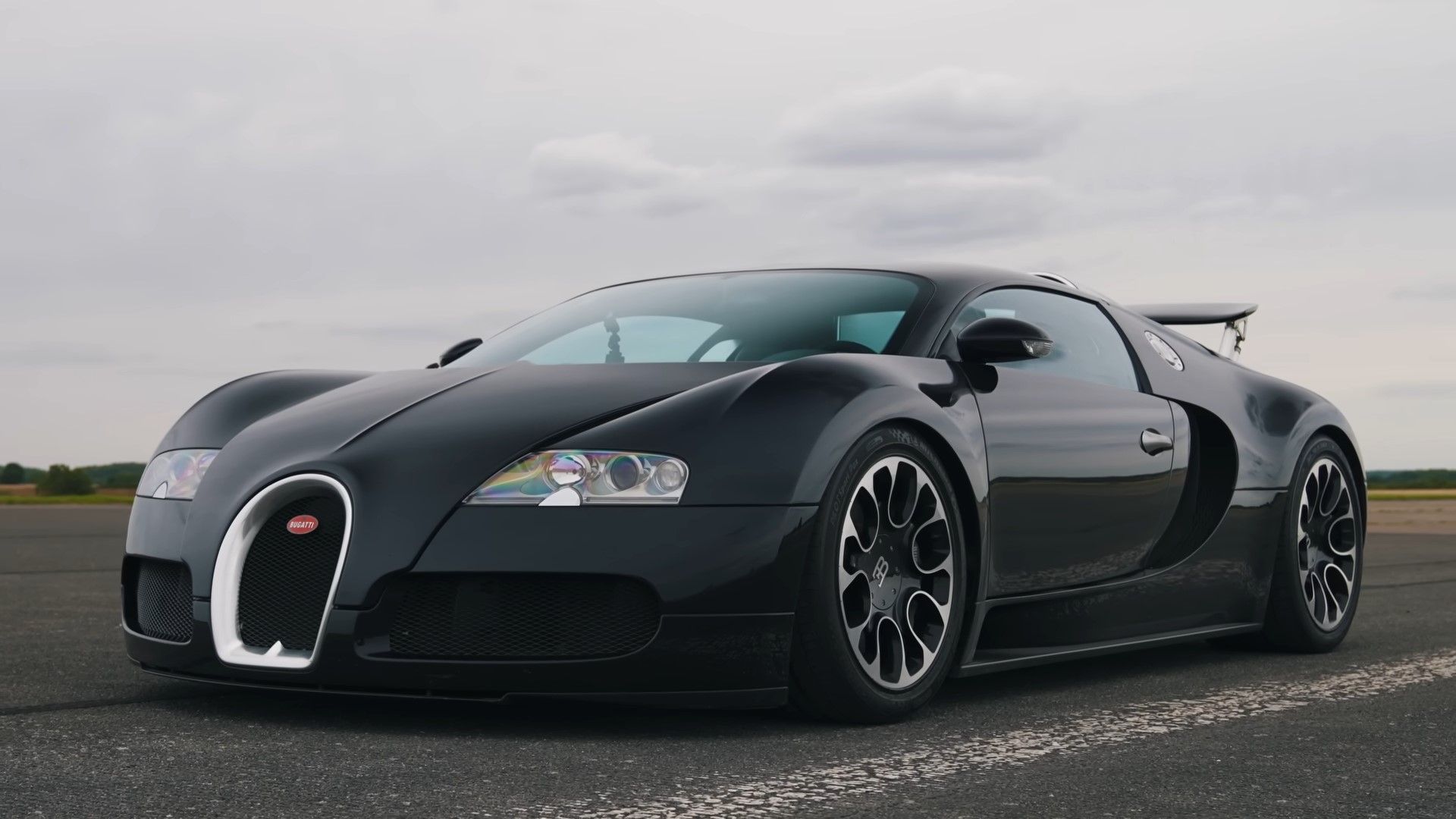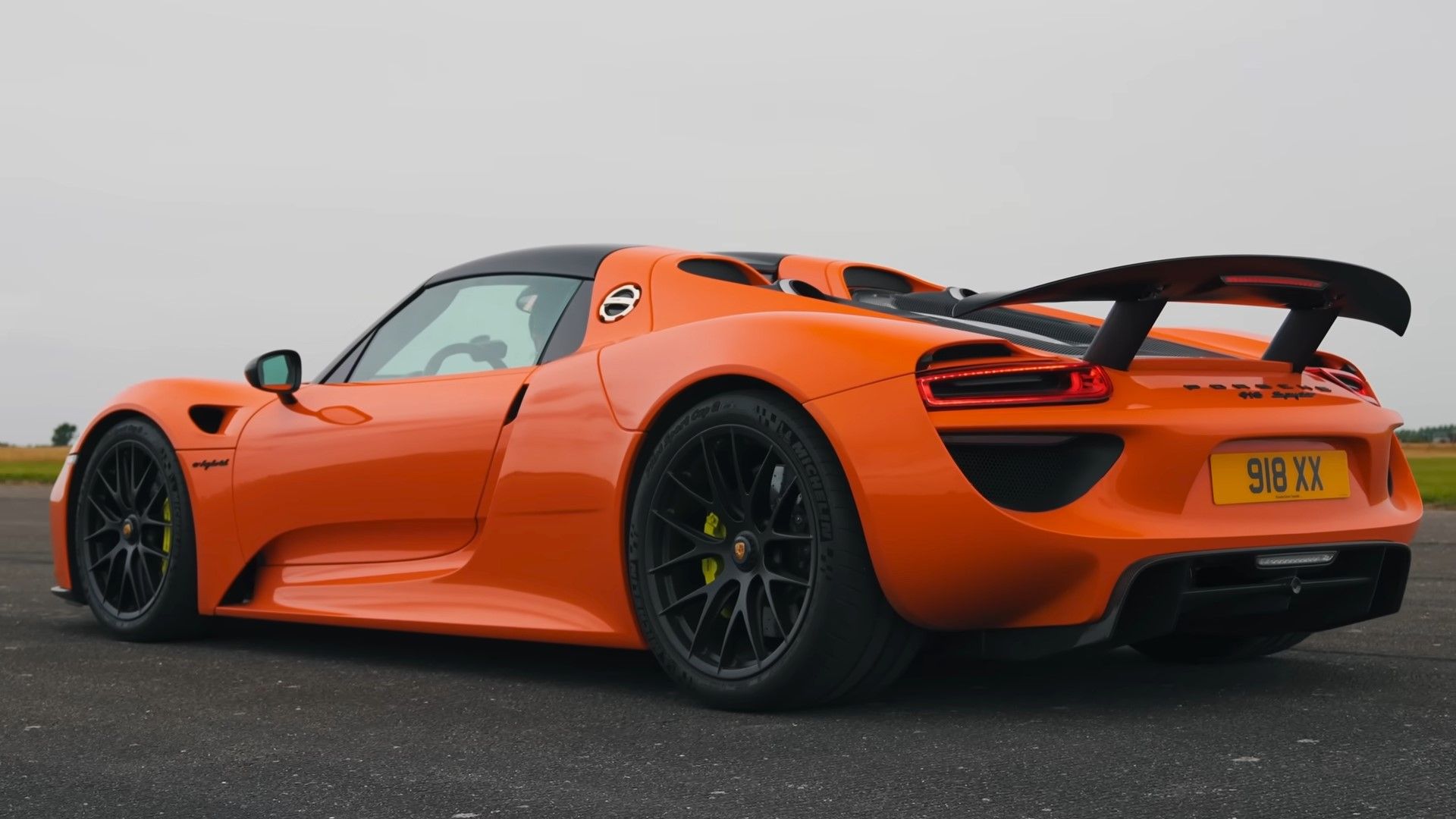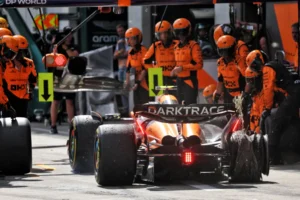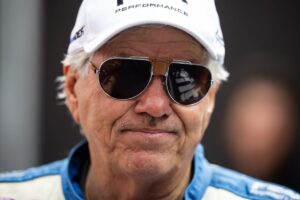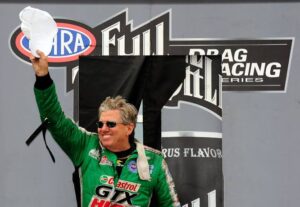It’s amazing to think that the Bugatti Veyron is nearly 20 years old, now. While hypercars used to be purely about raw power figures, the 2010s saw two diverging paths emerge. Bugatti and other manufacturers like Koenigsegg remained focused on pushing the boundaries of straight-line performance with engineering brute force. Meanwhile, manufacturers such as Ferrari, McLaren, and Porsche looked to integrate hybridity to create a more engaging driving experience.
Formula 1, too, was beginning to incorporate electric technology, going fully hybrid for the 2014 season. While all three of these cars are rapid, the YouTube channel carwow is seeing which car will reign supreme by pitting them against one another in a series of drag races.
The 918 Spyder And F1 Car Are Very Evenly Matched
Video Highlights
- The Bugatti Veyron was once the fastest car in the world, hitting a top speed of 253 mph
- The Porsche 918 Spyder has a race car-derived V8 engine with two electric motors and 12 miles of electric range
- The 2012 Red Bull RB8 won the 2012 F1 Drivers’ Championship with Sebastian Vettel
- The 918 Spyder and Formula 1 car are surprisingly close off the line, with the F1 car eventually winning outright
- Reliability issues hamper the Bugatti’s chances at winning, with the ECU refusing to give the driver full power off the line
Bugatti Veyron Vs Porsche 918 VS Red Bull RB8 1/4 Mile Results
| Model | Standing 1/4 Mile time |
| Bugatti Veyron | 12.2 seconds |
| Porsche 918 Spyder | 10.0 seconds |
| Red Bull RB8 | 9.1 seconds |
(data from Carwow)
The guys from carwow do three runs down the quarter mile, with only the times taken from the last run. The first run sees the 918 Spyder use its launch control to amazing effect, quickly pulling out a gap before it slowly gets overhauled by the F1 car just before the end of the quarter mile. The Veyron, meanwhile, looks like it’s stuck in treacle at the start, with it refusing to engage launch control.
The second run is exactly the same result, with the Veyron now struggling even more to get off the line, even with the launch control system disengaged. The carwow guys line up for a third run, but by this time, the Veyron is even more unhappy with the engine management light now coming on. The Bugatti crawls across the finish line and is out for the rest of the shoot.
The Red Bull RB8’s Weight Advantage Gives It The Win
Now, it might seem like a foregone conclusion pitting pretty much anything against a Formula 1 car in a straight line. The RB8 has a 2.4-liter naturally aspirated V8 producing 750 hp along with a 50 hp KERS system for a combined output of 800 hp. The F1 car also only weighs 1543 lbs, including the driver, and has full slick tires.
2012 Red Bull RB8 specifications
| Engine | 2.4-liter naturally aspirated V8 with KERS system |
| Drivetrain | Mid-engine, rear-wheel drive |
| Transmission | 7-speed hydraulic power shift |
| Power | 750 hp (+ 50 hp KERS) |
| Torque | 280 lb-ft (est) |
| Weight | 1543 lbs |
| 0-60 mph | 2.4 seconds |
| Value | Unknown |
The Porsche 918 and the Red Bull RB8 are surprisingly close for most of the three runs. However, the F1 cars’ significant weight advantage sees it manage to pull out a 0.9-second advantage by the end of the quarter mile. It would be interesting to see how a fully working Veyron would compare, though.
This 2006 Bugatti Veyron’s Mechanical Issues Stop It From Being Competitive
Introduced in 2005, the Bugatti Veyron stunned the world with its quad-turbocharged 8.0-liter W16 engine producing 1,001 hp and 922 lb-ft of torque. While the hypercar evolved over the years to become even faster, this 2006 Veyron can still hit 253 mph flat out, which, at the time, made it the world’s fastest production car.
2006 Bugatti Veyron Specifications
| Engine | 8.0-liter quad-turbocharged W16 |
| Drivetrain | Mid-engine, all-wheel drive |
| Transmission | 7-speed dual clutch automatic |
| Power | 1,001 hp |
| Torque | 922 lb-ft |
| Weight | 4,300 lbs |
| 0-60 mph | 2.5 seconds |
| Value | $1.5 million (avg) |
(figures provided by Car and Driver/Bugatti/classic.com)
This example isn’t in the best of health, though, as it’s been sitting undriven for over a year. The Veyron is notoriously expensive to run and maintain, with an oil change costing a whopping $21,000 in labor at some specialists according to CNET. In this case, the ECU problem was caused by a $200 air mass sensor that needed replacing.
The Porsche 918 Spyder Has an 887 HP LMP2-Derived V8 Hybrid Engine
2014 Porsche 918 Spyder specifications
| Engine | 4.6-liter naturally aspirated V8 + 2 electric motors |
| Drivetrain | Mid-engine, all-wheel drive |
| Transmission | 7-speed dual-clutch automatic |
| Power | 887 hp |
| Torque | 944 lb-ft |
| Weight | 3,690 lbs |
| 0-60 mph | 2.6 seconds |
| Value | $1.3 million (avg) |
The start of the 2010s saw hybrid technology, once the domain of fuel-conscious economy vehicles, now integrated into hypercar powertrains. Commonly referred to as part of The Holy Trinity of hypercars, the Porsche 918 Spyder was the outlier in that trio – being the only car with AWD and having a usable 12 miles of electric-only range.
The engine in the 918 is derived from the Porsche RS Spyder LMP2, with the capacity upped from 3.4 liters to 4.6 liters to now produce 608 hp. From there, Porsche fit two electric motors, resulting in a combined output of 887 hp and 944 lb-ft of torque.
Power goes through a 7-speed dual-clutch transmission to all four wheels and allows the 918 to hit 0-60 in 2.6 seconds, and on to a claimed top speed of 214 mph. There aren’t many production cars that can out-drag a 918, and even the Red Bull Formula 1 car has a tough time.
Sources: Bugatti, CNET, Porsche, classic.com, Car and Driver, Red Bull Racing,sportskeeda, autosport, carwow

